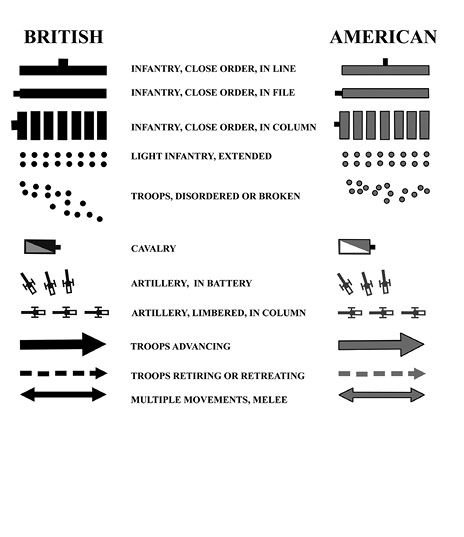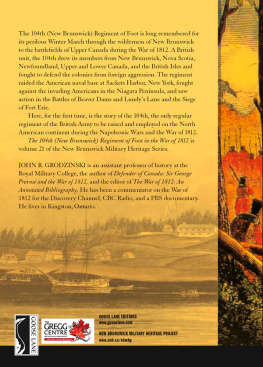Copyright
Copyright Richard Feltoe, 2013
All rights reserved. No part of this publication may be reproduced, stored in a retrieval system, or transmitted in any form or by any means, electronic, mechanical, photocopying, recording, or otherwise (except for brief passages for purposes of review) without the prior permission of Dundurn Press. Permission to photocopy should be requested from Access Copyright.
Editor: Cheryl Hawley
Design: Jennifer Scott
Epub Design: Carmen Giraudy
Library and Archives Canada Cataloguing in Publication
Feltoe, Richard, 1954-, author
The tide of war : the 1814 invasions of Upper Canada / Richard Feltoe.
(Upper Canada preserved, War of 1812)
Includes bibliographical references and index.
Issued in print and electronic formats.
ISBN 978-1-4597-1410-6 (pbk.).--ISBN 978-1-4597-1411-3 (pdf).--ISBN 978-1-4597-1412-0 (epub)
1. Canada--History--War of 1812--Campaigns. 2. Canada--History--War of 1812--Battlefields. I. Title. II. Series: Feltoe, Richard, 1954- . Upper Canada preserved War of 1812.
FC442.F436 2013 971.034 C2013-904118-4 C2013-904119-2
We acknowledge the support of the Canada Council for the Arts and the Ontario Arts Council for our publishing program. We also acknowledge the financial support of the Government of Canada through the Canada Book Fund and Livres Canada Books, and the Government of Ontario through the Ontario Book Publishing Tax Credit and the Ontario Media Development Corporation.
Care has been taken to trace the ownership of copyright material used in this book. The author and the publisher welcome any information enabling them to rectify any references or credits in subsequent editions.
J. Kirk Howard, President
Unless otherwise attributed, images and maps are the property and copyright of the author.
The publisher is not responsible for websites or their content unless they are owned by the publisher.
Visit us at: Dundurn.com
Pinterest.com/dundurnpress
@dundurnpress
Facebook.com/dundurnpress
Dedication
This book is offered:
First, as a salute to the memory of all those, on both sides of the lines, who served, sacrificed, and died as they loyally obeyed their countrys call-to-arms in the North American War of 18121815.
Second, as a mark of respect to the men and women of the military services of Canada, Great Britain, and the United States, who today honorably continue that legacy of service and sacrifice at home and across the globe.
Third, as a thank-you to my fellow Living History reenactors, with and against whom Ive fought for so many years.
Finally, as a memory from Bamp to my grandsons, Anthony, Lawrence, and Daniel.
TABLE OF CONTENTS
ACKNOWLEDGEMENTS
A s this series moves into book four, the list of those deserving of thanks for their contributions and support grows ever longer. Unfortunately, there is never enough space to adequately recognize every individual by name, and for this I wholeheartedly apologize. However, as in the past, certain people have made exceptional efforts to support this project and it would be remiss of me not to at least recognize them. First and foremost would be my wife, Diane, who manages the business end of things and continues to tolerate and accept my ongoing absences and hermit-like seclusion when Im upstairs in the computer room, writing for hours on end.
Second is Major John Grodzinski, assistant professor in the department of history at the Royal Military College of Canada in Kingston, Ontario, who took time from his already full schedule to read and critique this manuscript and provided valuable insight and vital corrections of interpretive error on my part as it applied to the events surrounding General Prevost and the events in Kingston, Sackets Harbor, and Oswego.
Third, thanks go to my fellow historians Pat Kavanagh and Donald Graves for the work they have done before me, providing me with a valuable trail of research that I have been able to refer to as comparisons to what I have accumulated in my own researches; not to mention the other dedicated staff members of the numerous museums, archives, and libraries that I visited to research this work and who cheerfully assisted me in my searches. Nor can I fail to acknowledge the continued guidance and support provided by my editor Cheryl Hawley, my designer Jennifer Scott, as well as the whole creative team at Dundurn Press, in turning this idea into a reality.
Penultimately, to Barry Penhale and Jane Gibson of Natural Heritage publications and the memory of Karen, who collectively put my feet on the path that allowed me to become an author.
Finally, I want to go on record in expressing my deepest gratitude and thanks to all my readers, who have supported me by buying my books, overwhelmed me by their kind reviews and complements on the series so far, and provided suggestions for ensuring the upcoming parts maintain their deservedly high expectations.
PREFACE
VARIATIONS
A s more fully outlined in the introduction to the first book in this series, The Call to Arms , the historic material included here includes variations in spelling, jargon, and place-name changes that have occurred over time. As a result, the following standards have been applied.
- Where variations on spelling in quotes are found, the material has been repeatedly checked to ensure its accuracy and is presented just as it was found in the original documents and without the term [ sic ].
- While generally recognized military terms are presented as is, some of the more archaic or jargon-type words are followed by a modern equivalent word. In a similar manner, maintaining the differential identification of military units from the two principal combatant nations (when both used a system of numbers to designate their regiments) has been achieved by showing British Regimental numbers as numerals (41st Regiment., 89th Regiment, etc.) and, where required, with their subsidiary titles (1st [Royal Scots] Regiment, 8th [Kings] Regiment), whilst the American Regiments are expressed as words (First Regiment, Twenty-Fifth Regiment, etc.)
- Where place names appear with a number of variants (e.g., Sacketts Harbour, Sackets Harbour, Sakets Harbor, or Sackets Harbor) I have adopted a single format for each case, based upon a judgment of what I felt was the predominant version used at the time. Where names have changed entirely, or would cause needless confusion (Newark becoming Niagara and currently Niagara-on-the-Lake), I have generally gone with what would clarify the location and simplify identification overall or included a reference to the modern name (Crossroads becoming Virgil).
Finally, in including images where there is both a period and modern image combined for a then-and-now effect, I have tried, as far as possible, to obtain the same relative perspective; subject to the limitations imposed where the physical landscape and property ownership make it possible to do so.

CHAPTER 1
Introduction
B etween 1808 and 1812, growing international tensions over a catalogue of issues pitted the United States and Great Britain against each other, leading to the spectre of war breaking out between the two nations; a circumstance actively endorsed by a group of political activists within the United States collectively known as War Hawks. Their goals finally came to fruition in the summer of 1812, when President James Madison signed the declaration of war on June 18, 1812. However, contrary to the prophetic boasts of these War Hawks, the desired war did not go smoothly toward a swift conclusion and the glorious victory they had expected. Instead, it dragged on and degenerated into a year and a half of half-baked campaigns and battlefield defeats at the hands of an alliance of British regular troops, Canadian militia units, and Native Allied warriors (hereafter, British or Allies). With embarrassing regularity, the inherent weaknesses of the pre-war American military structure revealed itself to include:





